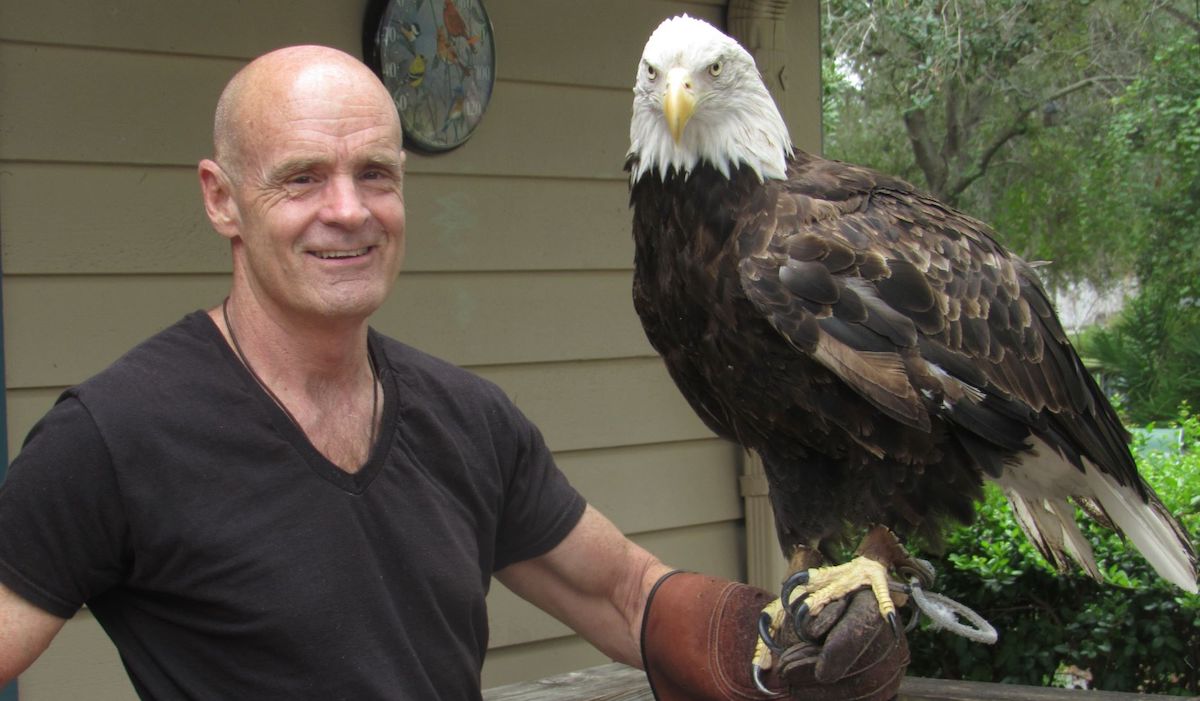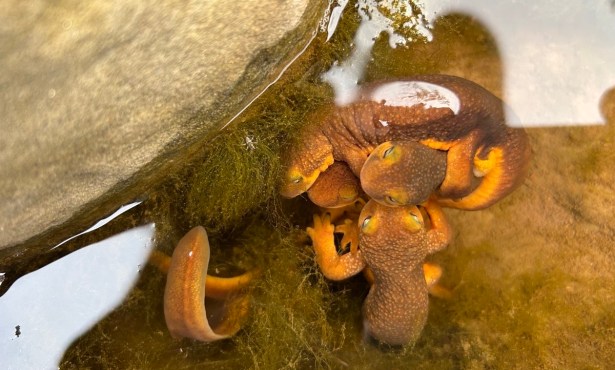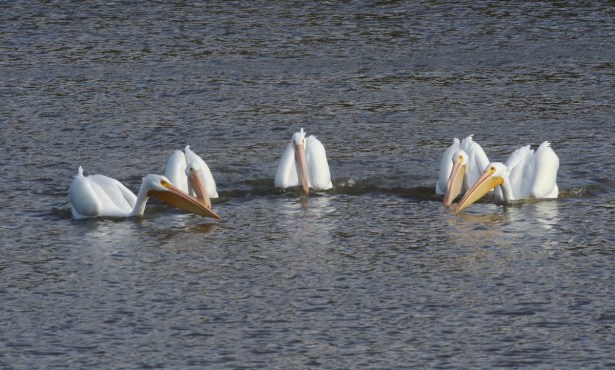‘The Bald Eagle’: Spirit Bird, Livestock Thief, National Symbol
Pulitzer Prize–Winning Author and Historian Jack E. Davis will Discuss New Book at Santa Barbara Museum of Natural History on November 3

On Thursday, November 3, Jack E. Davis, Pulitzer Prize–winning author of The Gulf, will discuss his latest book, The Bald Eagle: The Improbable Journey of America’s Bird, at the Santa Barbara Museum of Natural History.
I recently interviewed Davis via Zoom from his home in Florida.
Your latest book looks at U.S. environmental history through the lens of the bald eagle. Can you talk about how the book came to be? I’m very much aware that environmental writers tend to write for the choir, so I wanted to write an environmental story that I thought would reach beyond the usual audience and across the political spectrum, and what better subject than the bald eagle, because who doesn’t love the bald eagle?
I also wrote the book because we’re observing bald eagles today in numbers and frequency that we didn’t 20 years ago. I’m a baby boomer, and I never saw one growing up. People are really excited to see them. I call it a “poke the guy in the ribs next to you,” that moment of excitement. And so I thought, people might like to know a little bit more about this bird that they are so excited about. And not just about the species itself, but also the historical relationship with our country and with Americans.
Many of the early leaders, such as Jefferson and Adams, were pretty keen naturalists; it certainly doesn’t seem to be the case today that our leaders are really interested in natural history. Why the discrepancy? I think because then life was so immersed in nature. America was an agrarian economy; you’re outdoors all the time; you’re engaged; you’re paying attention to nature. It was very common for the average individual to have a weather diary, and to record what they saw outdoors. And so I think there was more of an intimate relationship with nature. Today, unfortunately, so many people are concealed indoors in an air-conditioned space. Architecturally, in our lifetime, we’ve seen windows grow smaller on buildings. Rooms got shorter; we’ve lost front porches.
One of my favorite sections of the book concerns Native Americans and their relationship with eagles, which was their spirit bird. Could you talk a little bit about that relationship? We don’t want to lump all native peoples into an undifferentiated whole. Not all native people saw bald eagles as spirit birds, but many did. This relationship with bald eagles goes back thousands of years. For many years, the bald eagle was a conduit between them, their ancestors, and the higher sphere. Their body parts — feathers, talons, wings, and beaks, and so forth — were used as a way to connect with ancestors or the higher spirit. Bald eagle feathers and body parts were very important in religious rituals and in ceremonies.
Native peoples did take bald eagles out of the wild for those purposes, but they didn’t take them in excess. And typically, the individual who captured or killed a bald eagle was a designated individual that had to go through an elaborate ceremony beforehand, perhaps fasting and praying.
Sign up for Indy Today to receive fresh news from Independent.com, in your inbox, every morning.
Many people are aware of the effects of DDT in sending birds, including bald eagles, to the brink of extinction. But most people haven’t heard of the wholesale slaughter of eagles in the 19th century. How did this come to your attention, and was the information you found easy to attain? The information was fairly accessible. Americans loved the image of the bald eagle, but they didn’t care for the living species. It’s a predator animal, and Americans treated it as they did other predators, such as wolves, bears, and mountain lions. It was regarded as a livestock thief and as a threat to the individual’s livelihood, or to the food that one put on the table. So it wasn’t hard to find references in the documents to people expressing a dismay with bald eagle behavior or a dislike for the species itself.
I also went to one source, Newspapers.com, which is a fantastic database. It’s a collection of thousands of daily and weekly newspapers from across the country dating back to the colonial period. I conducted a search at one point, with a date range from 1850 to 1920, with three words in quotation marks: “bald eagle shot,” and I got well over 100,000 hits. There were just endless articles about bald eagles being shot. Rarely did the newspapers condemn this kind of activity. It was treated more like somebody catching a big fish.
I read the field notes of John James Audubon, and he hated bald eagles. I found other references like that from members of National Audubon. They testified before Congress, calling the bald eagle livestock killers, and one expert witness before Congress said he could not deny that bald eagles didn’t kidnap babies.
You mention Audubon. I got the sense in the book that you don’t have the highest regard for John James Audubon, for whom the Audubon Society is named. He actively despised bald eagles and seemed like a bit of an insufferable character. If you could choose one of the other early naturalists who would maybe be a better role model or the more appropriate standard-bearer for today’s conservation groups, who would it be? One of Audubon’s contemporaries, Alexander Wilson. The thing about Wilson is that he tended to humble himself before nature, whereas Audubon always saw himself and humanity as superior to nature. I love that Alexander Wilson said that we should not pretend that we know everything about nature, that we can ever know everything about nature, including birds, that there’s an intelligence there that’s different from ours, that we just simply can’t comprehend.
I gained a great appreciation for Alexander Wilson. Not that he didn’t go out and shoot birds for recreation like John James Audubon did. But at least the guy was a deeper thinker than Audubon and ahead of his day. Why we don’t more frequently name organizations after people such as Wilson, I don’t know.
Maybe we can work together to rename the society the National Wilson Society. I have a feeling that won’t happen. But the D.C. Audubon group did change its name, not because of his bloody campaign out in the wild, but because he was a slave owner. It is ironic that this guy who slaughtered birds for pleasure is the namesake of one of the earliest conservation organizations, and one of the most influential conservation organizations today.
4·1·1
Davis will discuss his book on Thursday, November 3, at 7:30 p.m. at the Santa Barbara Museum of Natural History (2559 Puesta del Sol). The event is part of UCSB’s Arts and Lectures series and is co-presented with Santa Barbara Museum of Natural History and Santa Barbara Audubon Society. Admission is free with prior registration. You can register here.
Support the Santa Barbara Independent through a long-term or a single contribution.



